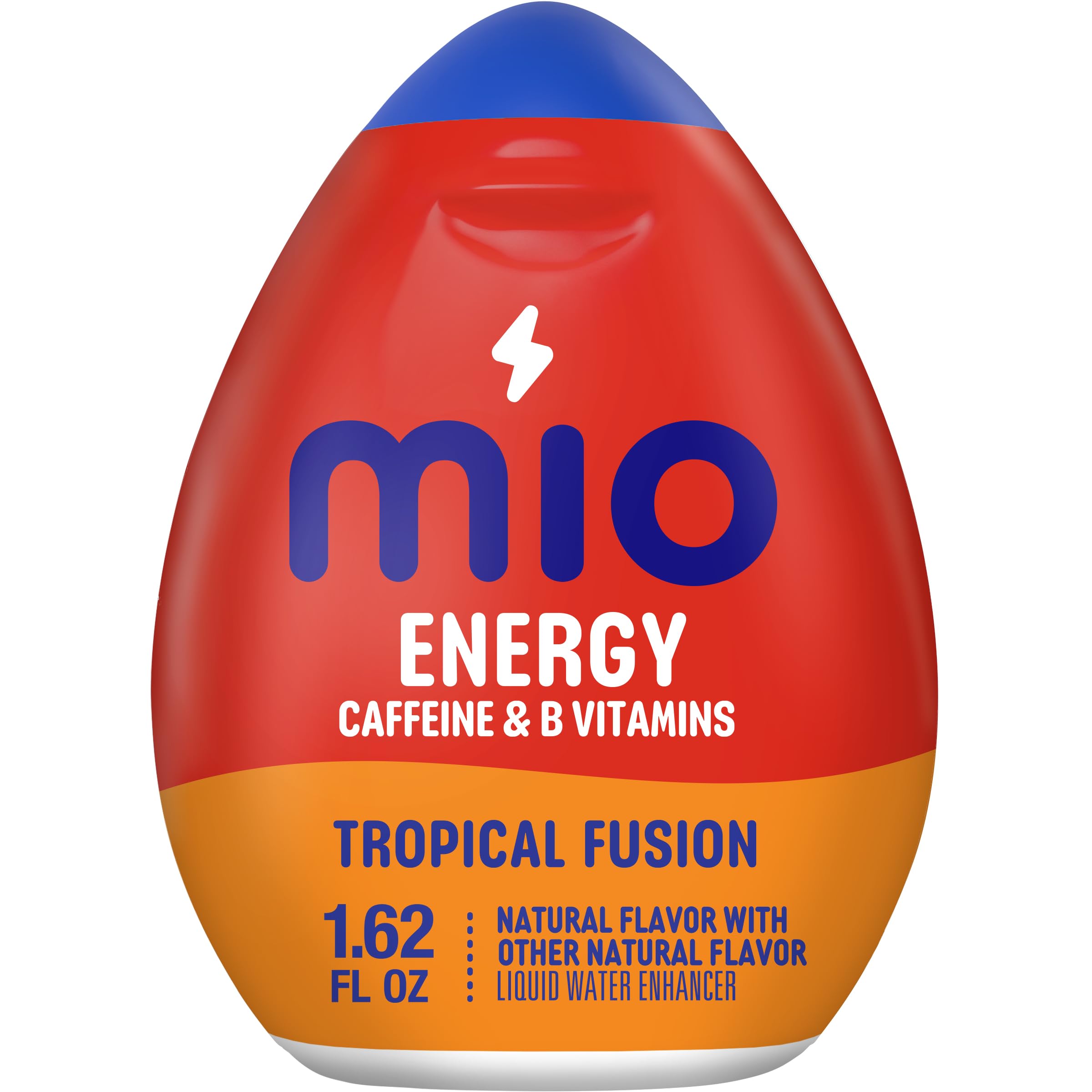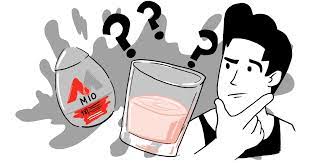
What’s MiO Water Enhancer All About?
Getting to Know MiO
So MiO is this cool liquid water enhancer put out by Kraft Foods that makes it easier to stay hydrated. These days, it can feel like a drag to drink enough water. But with MiO, you can jazz up plain water with all kinds of yummy flavors. Whether you’re into fruity punches or zesty lemonade, there’s a MiO flavor that you’ll probably love. These bottles are also super portable so you can just toss one in your bag and add some flavor anytime.
For a lot of folks, MiO is a sweet alternative to sugary drinks. It’s all about enjoying tasty drinks without the sugar and calories that you’d find in sodas or juices. That’s why it’s popular for anyone trying to cut back on unhealthy drinks.
What’s Inside MiO?
Every MiO flavor is made to give you a different drinking experience, and they have all sorts of ingredients to add flavor and kick up nutritional value. Usually, MiO has:
- Water – This is the main base for the enhancer.
- Citric Acid – Gives a tangy taste and helps preserve the drink.
- Artificial Sweeteners (like Sucralose and Acesulfame K) – They add sweetness without the calories.
- Natural Flavors – Sourced from real stuff to up the taste.
- Artificial Colors – These make it look vibrant.
- Preservatives (like Sodium Benzoate and Potassium Sorbate) – Help keep it fresh for longer.
Each MiO flavor can really boost your hydration, especially if plain water doesn’t excite you. But it’s important to think about what’s in it and how it could affect your health, which we’ll dive into next.

Are There Any Health Concerns with MiO?
What’s Up with the Artificial Stuff?
Even though MiO seems like a tasty choice over plain water, its ingredients come with some health concerns. One big issue is the artificial stuff used to make it. Here are some of the main ingredients:
- Sucralose: This well-known sweetener is way sweeter than sugar but has no calories. Some studies suggest it could mess with insulin levels and gut health, possibly causing blood sugar spikes.
- Acesulfame K: Like Sucralose, Ace-K is also a zero-calorie sweetener that some research ties to weight gain and metabolic issues, especially in lab mice. The long-term effects on humans still need more looking into.
- Artificial Colors: MiO uses dyes like Red 40 and Blue 1, which some believe might lead to hyperactivity in kids and other health issues. Although the FDA says they’re safe, the debate about their effects is ongoing.
All these artificial ingredients make people wonder if the ease of using MiO is worth the possible health risks, especially if you’re sensitive to additives.
How About the Sugar Content?
Even though MiO brands itself as sugar-free, it’s crucial to understand what that means. Each serving doesn’t have sugar or calories, which looks great for anyone keeping track of what they consume. But remember, the sweetness comes mainly from artificial sweeteners, which can make you wonder how they affect your hunger or cravings.
Some studies indicate that just tasting sweet flavors – even without sugar – could spark cravings for sweet foods. This leads to questions about whether using MiO might inadvertently push you to eat more sugary snacks, kind of defeating the idea of healthy hydration.
While the lack of sugar gives it a low-calorie badge, it’s important to think about how its ingredients affect your overall wellness. In the end, balance is key; MiO can help with hydration, but relying on it too much for flavor isn’t the best idea.

What Are the Benefits of Using MiO?
Boosting Hydration
One of the best things about MiO is its ability to help people drink more water, especially if plain water feels boring to them. Loads of people struggle to reach their daily water intake, particularly if they’re used to sweeter drinks. MiO can be a handy tool to fix that. Here’s how:
- More Water Consumption: By adding flavors, MiO can make drinking way more fun and get you to sip more throughout the day. For those who find plain water tedious, this can really change the game.
- Easy to Use: The convenience of MiO lets you toss it in your bag or pocket, making it a breeze to flavor your water anywhere. A few drops can totally change a dull bottle of water into something yummy, which is especially great during workouts or on busy days.
It’s super important to keep in mind that MiO shouldn’t be your only source of hydration, but it can definitely help you get in more fluids when used smartly.
Lots of Flavor Choices
Another cool thing about MiO is the wide variety of flavors it brings to the table. This can make it fun for anyone wanting to personalize their hydration. MiO offers a bunch of unique flavors, from classic ones like lemonade and fruit punch to more adventurous picks like black cherry and berry pomegranate.
- Mix and Match: You can also mix different flavors together to create your own customized drinks. This means every day you can mix it up with something new.
- Fun Taste: If plain water seems dull, adding bold flavors can make drinking water way more enjoyable. Many people might find they look forward to hydrating when they can give it their own twist.
Overall, MiO can be a handy aid in staying hydrated, especially if you’re moving away from sugary drinks. Just remember to keep a balance between flavored enhancers and getting water from natural sources, like fruit or herb-infused water.
What Research Says About MiO and Health Impact?
Findings from Studies
As MiO keeps getting more popular as a water enhancer, scientists have started looking at how its ingredients can affect health. Here’s what some research has shown about its key artificial sweeteners like Sucralose and Acesulfame Potassium:
- Blood Sugar and Insulin: Studies indicate that Sucralose and Ace-K might mess with your blood sugar and insulin levels. Even if these sweeteners don’t add any calories, some research suggests that consuming them might trigger insulin releases, which can lead to blood sugar spikes.
- Gut Health Issues: There’s increasing evidence that these artificial sweeteners might negatively impact gut health. Some studies hint that they can upset the balance of good gut bacteria, which is important for staying healthy.
- Long-term Risks: Some research in lab mice has raised alarms about Ace-K, linking it to weight gain and metabolic problems, but we still need more human studies to get clearer answers.
These points highlight why it’s important to think about the potential long-term health effects of using MiO regularly and show the need for more comprehensive studies.
What Do the Experts Say About MiO?
Nutrition experts have different opinions on MiO. The general agreement is that while it can help with hydration, it might not be the best choice for everyday use.
- Talk to a Pro: Many nutritionists recommend trying out different hydration methods and suggest sticking to natural options. Whole foods like fresh fruits and herbs can flavor your water without adding any of the synthetic stuff that’s in MiO.
- Everything in Moderation: Most experts agree if you like MiO, that’s cool, but it’s better to use it in moderation. With the health worries about artificial ingredients, it’s probably best not to make MiO a mainstay in your daily diet.
Ultimately, it’s up to you to balance what you get out of MiO with the potential risks to your health and to think about your personal dietary needs before making it a regular part of your hydration routine.
How to Use MiO Responsibly?
Portion Control Tips
While MiO is a fun way to up your hydration, controlling portions is key to getting the most out of it while keeping any health risks in check. Here are some tips to think about:
- Stick to Recommended Serving Sizes: A standard serving of MiO is usually 1/2 teaspoon (about 2 mL) meant to flavor 8 ounces (237 mL) of water. Keeping within this guideline helps avoid overdoing it on artificial sweeteners and keeps your hydration in check.
- Limit Your Daily Use: To cut back on the possible health risks of regularly consuming artificial ingredients, try to limit how many MiO servings you have in a day. Starting with one or two servings seems like a good goal but cut back if you start feeling weird.
- Know Your Body: Keep an eye on how your body feels after having MiO. If you notice any negative reactions, it might be best to ease up or stop using it completely.
Being mindful of portion sizes helps you enjoy flavor without overdoing it on those artificial extras.
Natural Alternatives to MiO
If you’re looking for ways to flavor your water without MiO or any artificial stuff, there are plenty of natural alternatives to make hydration tastier:
- Fruit Infusions: Tossing in slices of fruit like lemon, lime, oranges, or berries can add a refreshing taste and even some antioxidants. Just add fresh fruit to your water, let it sit for a bit and enjoy!
- Herb Infusions: Fresh herbs like mint, basil, or rosemary can bring a twist to your water. Play around with different combinations to find what you like best.
- Natural Juice Concentrates: Diluting a little bit of 100% fruit juice (like lemon or pomegranate) can add flavor without the artificial sweeteners in MiO.
- Herbal Teas: Brewing some unsweetened herbal tea to serve cold can also be a great option. Peppermint, hibiscus, and chamomile are great choices that offer flavor and wellness benefits.
These options can not only make water more enjoyable but also add some nutritional value without all the artificial stuff, which is great for your health.
Wrapping It Up: So Is MiO Bad for You?
Recap of Findings
When looking at how MiO affects health, it’s important to balance both the good and the bad aspects of its ingredients. MiO water enhancer markets itself as a sugar-free and tasty alternative to sugary drinks, which is appealing to anyone trying to drink more water. Here are the main thoughts to keep in mind:
- Artificial Ingredients: You’ll find artificial sweeteners like Sucralose and Ace-K in MiO, which some research says could lead to metabolic and gut health problems. While they make things sweet without calories, we still don’t know enough about their long-term effects on health.
- Preservatives and Colors: MiO also has a bunch of artificial colors and preservatives that some people are concerned about, especially those with sensitivities. Even though the FDA says they’re safe, there are worries about possible connections to hyperactivity in kids and other side effects.
- Hydration Benefits: Still, for those who find it hard to drink plain water, MiO could indeed be a useful tool to improve hydration. It helps people drink more and can help break away from sugary drinks.
Keeping these things in mind helps you make better choices about how you hydrate.
Final Words
So is MiO bad for you? It really comes down to how much you use it and your personal health. For most people who enjoy MiO in moderation, it’s probably not a big health concern. But be aware of the possible downsides that can come with artificial sweeteners and additives.
If you like MiO, try mixing it with natural options like infused water or herbal teas so you’re not too dependent on artificial flavors. Ultimately, paying attention to how your body feels and adjusting based on your health will make staying hydrated even better. And if you’re unsure about adding new products to your diet, chatting with a healthcare professional is a smart move.

Leave a Reply